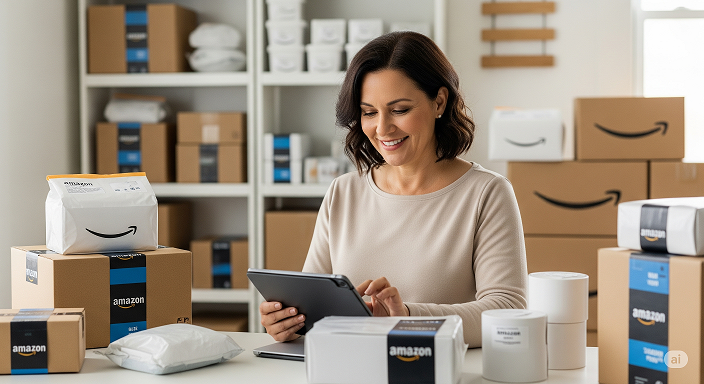In the competitive world of Amazon selling, profit margins often come under pressure due to listing fees, fulfillment costs, marketing spend, and price wars. For sellers, especially in saturated categories, raising prices isn’t always an option—it could reduce conversions and hurt the Buy Box win rate. But what if you could improve your margins without touching your price tag? It’s entirely possible—and surprisingly achievable.
Here are actionable strategies to boost your Amazon profits while keeping your prices customer-friendly:
1. Optimize Your Fulfillment Strategy
One of the biggest cost centers for Amazon sellers is fulfillment. Whether you’re using Fulfillment by Amazon (FBA) or Fulfillment by Merchant (FBM), costs add up quickly. Consider these tactics:

- Reduce packaging weight and size: Even small reductions can lower FBA fees significantly.
- Audit your FBA storage fees: Remove or liquidate slow-moving inventory that racks up long-term storage fees.
- Compare FBA vs. FBM: For low-volume or oversized items, FBM might offer better economics.
Streamlining fulfillment not only cuts costs but can also speed up delivery, improving customer satisfaction.
2. Lower Your Cost of Goods Sold (COGS)
Without reducing quality, explore opportunities to source smarter:
- Negotiate with current suppliers: Volume discounts or payment terms can improve your cash flow.
- Diversify sourcing: Investigate suppliers in different regions, especially where favorable trade agreements exist.
- Consolidate purchases: Combining procurement across product lines can boost bargaining power.
Every cent saved at the sourcing stage adds directly to your bottom line.
3. Improve Listing Conversion Rates
Higher conversions mean more sales per visitor—which means better ROI on traffic. To achieve that:

- Upgrade product imagery: Include high-resolution lifestyle photos and 360-degree views.
- Refine product copy: Use bullet points and benefit-driven language aligned with customer intent.
- Leverage A+ Content: If you have Brand Registry, A+ Content can educate buyers and build brand trust.
When more shoppers become buyers, you make more from the same traffic volume—without changing your prices.
4. Optimize Ad Spend via Amazon Data
Amazon PPC campaigns can bleed money if not managed actively. Instead of scaling ad spend, optimize it:
- Use negative keywords: Prevent wasting spend on irrelevant traffic.
- Focus on high-converting keywords: Double down on what works and pause underperforming terms.
- Monitor placement data: Adjust bids based on where ads perform best—top of search often delivers the highest ROI.
A tighter ad strategy means lower customer acquisition costs and higher profitability.
5. Enhance Inventory Turnover

A sluggish inventory turnover ties up capital and eats into profit with storage fees. You can improve this with:
- Demand forecasting: Use seasonality and historical sales data to plan smarter.
- Promotions and bundles: Move products faster without cutting the base price.
- Just-in-time replenishment: Reduce excess inventory while keeping stock levels sufficient for demand.
Better inventory flow equals less money stuck in storage—and more working capital to reinvest.
6. Build a Brand, Not Just a Listing

The long-term path to fatter profit margins lies in brand loyalty. That means:
- Build an email list or social following off-Amazon
- Offer post-purchase value like guides or digital downloads
- Encourage repeat purchases with inserts or subscribe-and-save incentives
Branded products can command stronger loyalty and lower marketing dependency, giving you more margin room without price hikes.
Final Thought
Increasing Amazon profit margins without raising prices isn’t about one big change—it’s the result of thoughtful tweaks across sourcing, fulfillment, listing optimization, advertising, and brand-building. For sellers who can execute consistently, the rewards are powerful: healthier margins, less pricing pressure, and a more resilient business.








